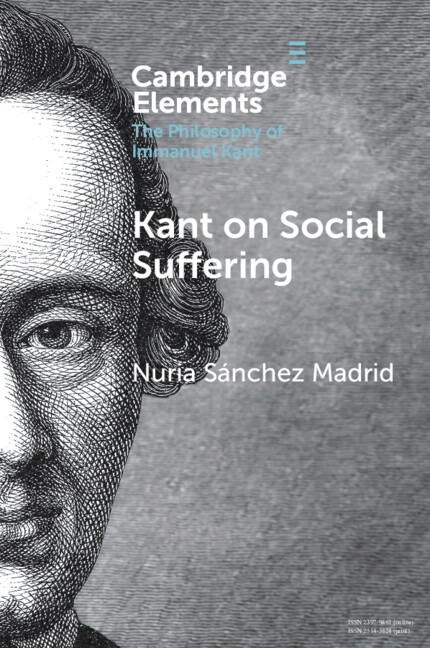Kant on Rational Sympathy
This Element explains Kant's distinction between rational sympathy and natural sympathy. Rational sympathy is regulated by practical reason and is necessary for adopting as our own those ends of others which are contingent from the perspective of practical rationality. Natural sympathy is passive and can prompt affect and dispose us to act wrongly. Sympathy is a function of a posteriori productive imagination. In rational sympathy, we freely use the imagination to step into others' first-person perspectives and associate imagined intuitional contents with the concepts others use to communicate their feelings. This prompts feelings in us that are like their feelings.
Product details
December 2024Adobe eBook Reader
9781009371216
0 pages
This ISBN is for an eBook version which is distributed on our behalf by a third party.
Table of Contents
- 1. Introduction
- 2. The Distinction Between Rational and Natural Sympathy
- 3. A Debate about Translating Doctrine of Virtue §§34-5, and a Concern about Passivity
- 4. Sympathy and the Imagination
- 5. Putting Ourselves in Others' Places
- 6. Correctly Communicating Feeling
- 7. What Problem in Kant's Ethics is Solved by Rational Sympathy?
- 8. Responding to Exclusionists, and Distinguishing Adopting and Promoting Ends
- 9. How Rational Sympathy Allows Adoption of Merely Permissible Ends
- 10. Sages and Sympathy in Kant's Theory of Friendship
- 11. Friendship as an Ideal of Sharing All Our Ends and All Our Feelings
- 12. Four Objections to the Rationally Sympathetic Interpretation of Friendship
- 13. Sympathy as a Moral Incentive, and its Relationship to Respect
- 14. Contemporary and Historical Connections to Empathy
- 15. Conclusion
- Bibliography.





